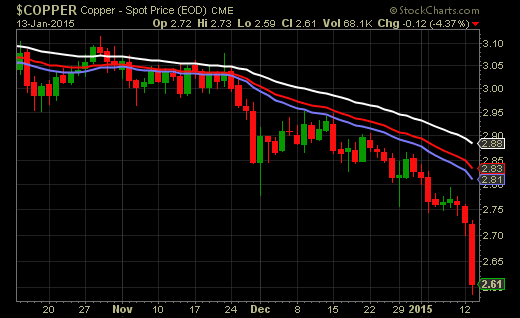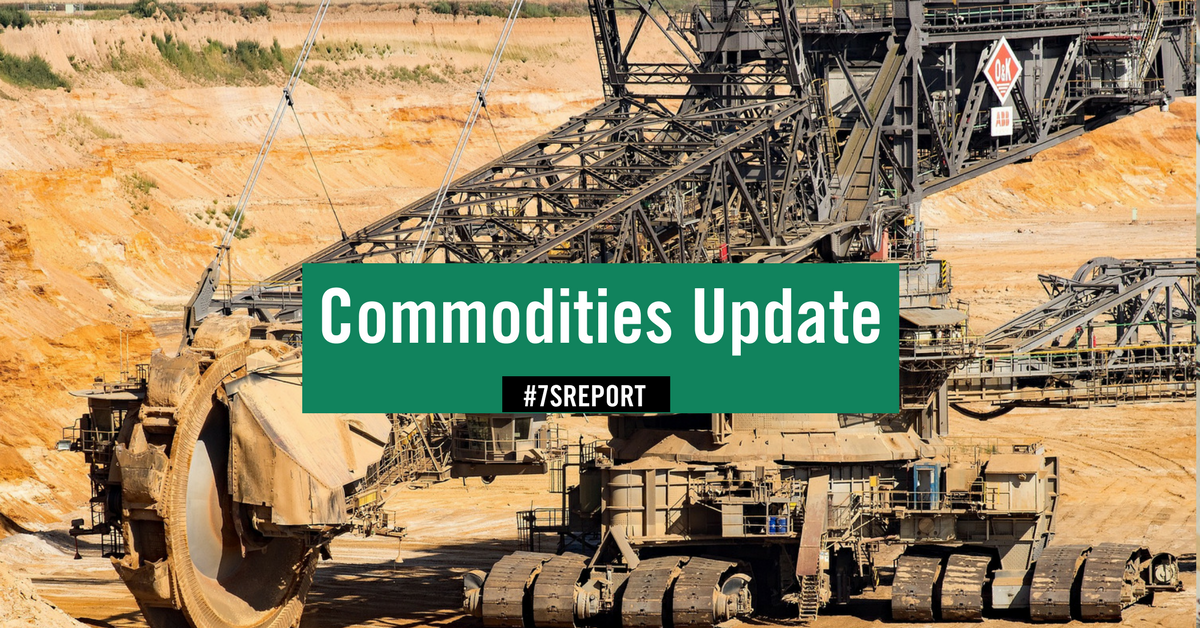The World Bank Slashes Growth, and Traders Thrash Copper
The World Bank thinks global growth will be slower than originally estimated. On Tuesday, the lender issued its semiannual Global Economic Prospects report, and for global growth bulls the outlook wasn’t very encouraging.
For 2015, the global economy is estimated to expand by 3%, which is down from a projected 3.4% growth rate in June. In 2016, the World Bank thinks growth will come in at 3.3%, which is down from the prior estimate for 3.5% growth.
While most investors would be well served to take the World Bank’s estimates with the proverbial grain of salt, one thing we do know is that traders often take these data projections serious—at least in the short-term. We saw just that in Tuesday trade, as growth concerns weighed on commodities, most notably copper, which traded down nearly 5% in the session.
It is often said that copper has a Ph.D. in global economics, which just means that copper prices are a good indicator of the health of an economy. When the economy is trending lower, then usually we’ll see that reflected in copper prices—and that’s precisely what happened Tuesday, and what’s happened in copper via the iPath DJ-UBS Copper SubTR ETN (JJC). This copper exchange-traded note is down some 17.2% over the past three months, a move that betrays just how fearful traders have become about the prospects for global growth.
More broadly, the spot price of copper has been in a bearish downtrend now really since the spring 2011 highs, but most recently lower energy costs and weak demand specifically out of China, the world’s largest consumer of the industrial metal, have pushed prices down to near six-year lows.
The collapse in “Dr. Copper,” has been somewhat lost in the oil declines, but clearly this is not a good sign for global growth.
Chinese demand for copper is expected to fall again this year, and that presents a very troubling backdrop for the future of copper prices going forward. The bottom line is clear; copper is falling victim to a combination of low production costs (oversupply) and soft demand expectations, which is resulting in a sharp slide to the downside that we think has room to continue going even lower.
So, if you are long this industrial commodity (and I hope you’re not) then now is the time to rethink the “Dr. Copper” bull trade.







